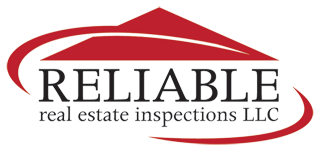Adding a fence to your property is not just about marking boundaries; it’s an investment in security, privacy, and curb appeal. Whether you’re considering a fence to keep pets safe or enhance privacy, proper planning is essential for a successful outcome. From choosing the right materials to understanding local regulations, here’s a comprehensive guide to help you while planning for a new fence.
1. Planning for a New Fence: Define Your Purpose
Before diving into fence styles and materials, clearly define why you want a fence. Will the fence have a functional or aesthetic purpose? Understanding your primary objectives will help you make informed decisions throughout the planning process.
2. Set a Budget
Fence costs can vary significantly depending on materials, style, and size. Determine how much you’re willing to spend and prioritize features based on your budget. Consider long-term maintenance costs as well.
3. Choose the Right Materials
Fences are available in a variety of materials, each with its own set of pros and cons:
- Wood: Traditional and versatile, wood fences offer natural beauty but require regular maintenance like staining or sealing.
- Vinyl: Low-maintenance and durable, vinyl fences come in various styles and colors, but they can be more expensive upfront.
- Metal: Aluminum and wrought iron fences provide strength and durability but may require occasional repainting or rust-proofing.
- Chain Link: Affordable and practical for security purposes, chain-link fences are less aesthetically pleasing but serve their purpose well.
- Composite: Made from a mixture of wood fibers and recycled plastic, composite fences offer the look of wood without the same maintenance requirements.
Consider durability, maintenance requirements, and aesthetic appeal when choosing the right material for your fence.
4. Determine Fence Height and Style
The height and style of your fence should align with your objectives and local regulations. Taller fences are typically preferred for privacy, while decorative fences may be lower. If your fence will be a safety barrier for kids and pets, consider how high they can jump and climb. Check with your homeowner’s association (HOA) or local municipality for restrictions on fence height and style.
5. Understand Property Lines and Regulations Before Planning For a New Fence
Before installing a fence, it’s crucial to know exactly where your property lines are. Hire a professional surveyor to avoid encroaching on neighbors’ properties or public land. Additionally, research local zoning laws, HOA guidelines, and building codes to ensure compliance with regulations regarding fence installation.
6. Consider Maintenance While Planning for a New Fence
Different materials require varying levels of maintenance. While some fences may need periodic staining or painting, others require minimal upkeep. Factor in maintenance requirements when choosing the best material for your fence, especially if you prefer a low-maintenance option.
7. Obtain Necessary Permits
Depending on your location and the type of fence you’re installing, you may need permits from your local building department. Be sure to obtain the necessary permits before beginning construction to avoid potential fines or delays.
8. Hire Professionals
While some homeowners may opt for a DIY approach, hiring professionals saves time and effort and ensures quality results. Look for reputable fencing contractors with experience installing the type of fence you desire. Obtain multiple quotes and thoroughly research each company before making a decision.
9. Communicate with Neighbors While Planning for a New Fence
If your fence will border neighboring properties, it’s courteous to communicate your plans with your neighbors beforehand. Discussing your intentions can help address any concerns they may have and potentially avoid conflicts down the road.
10. Plan for Future Maintenance
Even low-maintenance fences require occasional upkeep. Plan for future maintenance tasks such as cleaning, repairs, or refinishing to ensure your fence remains in good condition for years.
Planning for a new fence involves carefully considering various factors, from materials and style to local regulations and maintenance requirements. By defining your objectives, setting a budget, and researching options thoroughly, you can make informed decisions and create a fence that enhances your property for years. Proper planning is essential for a successful fence installation, whether seeking security, privacy, or aesthetic appeal.
FAQ: Building a New Fence at Home
How do I determine the right height for my fence?
The height of your fence depends on various factors, including your desired level of privacy, local regulations, and aesthetic preferences. Typically, residential fences range from 4 to 8 feet in height.
Should I stain or paint my fence?
Staining or painting your fence can help protect it from weathering and prolong its lifespan. Choose a stain or paint specifically formulated for outdoor use and follow the manufacturer’s instructions for application.
How do I maintain my fence?
Regular maintenance tasks for fences include cleaning off dirt and debris, inspecting for damage or loose components, and applying protective coatings as needed. Addressing issues promptly can prevent more extensive repairs later on.
Are there any regulations regarding the placement of fences near utilities or easements?
Yes, it’s important to know about underground utilities or easements on your property before installing a fence. Contact your utility companies or local authorities to locate underground utilities, and ensure you comply with any regulations regarding setbacks from utility lines or easements.
Reliable Real Estate Inspections offers home inspections in Hilton Head and the surrounding areas. Contact us to request our services.

